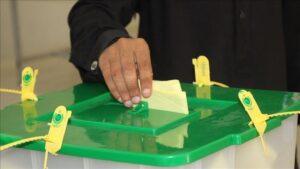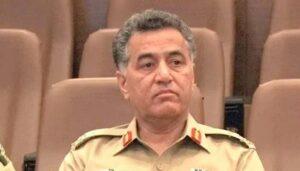Only 5.5% of superior court judges are women, pay inequality further harms female lawyers in surveys
Advocate Saadia Noreen came to the fore for the upcoming Islamabad Bar Council (IBC) elections for the first time after meeting the eligibility criteria.
While some high-profile lawyers supported her, recognizing her experience and credibility, she faced negative reactions from many others. Detractors questioned her experience, commenting that no other women were running in these important elections and that she was not needed in the male-dominated campaign.
Noreen says many of her challengers organized large dinners and campaign rallies, even though this was against Pakistan Bar Council (PBC) rules. This open violation made it more difficult for him to maintain strong momentum during his campaign. Such extravagance was not only against the rules, but he could not afford to organize such events given the significant financial constraints.
“Female lawyers earn 10 to 30 percent less than men for the same work. Pay inequality remains widespread and must be addressed. More female mentors and leaders are needed as gender equality helps make male-dominated workplaces and professions safer and healthier,” Noreen explained.
Despite having met all the campaign requirements, he received little support from his community and ultimately decided to withdraw from the elections.
Reduced to minority
The upcoming Pakistan Bar Council elections took place earlier this month.
Members of the legal community are elected for a five-year term to the Islamabad and Provincial Bar Councils of Pakistan to ensure fair and efficient justice and protect the rights and interests of practicing lawyers. However, the process continues to be marred by gender inequality.
Read: Lawyer survey results may weigh on key IHC judges
A report by the Pakistan Women in Law Initiative, The state of representation of women as candidates in the 2025-30 Bar Council electionsreveals that of a total of 638 candidates for all bar associations, 614 (96%) are men and only 24 (4%) are women. There are a total of 148 seats in the Bar Councils of Pakistan.
This time, 313 men and 13 women competed in the Punjab Bar Council, with women making up only 4% of the candidates. The Sindh Bar Council shows a similar pattern, with 135 men and six women (4%). The Khyber-Pakhtunkhwa Bar Council has 106 men and four women (also 4%), while the Balochistan Bar Council includes 39 men and only one woman (2%).
The Islamabad Bar Council elections completely lack female representation, with 21 male candidates and no female candidates.
Bar councils lack reserved seats or affirmative action to ensure fair representation of women, and the aforementioned report suggests that the percentage of women ultimately elected is expected to be even lower.
“We have seen a pattern emerge whereby, before each election cycle, the eligibility requirements set out in Section 5A of the Bar and Bar Council Act continue to be amended in a way that disproportionately affects women and young lawyers,” says Nida Usman, lawyer and founder of Women in Law Initiative Pakistan.
Section 5A of the Bar and Bar Council Act defines the criteria for candidates to qualify for election to a Provincial Bar Council and the Islamabad Bar Council, which, over the years, have become exclusionary for female candidates and early career lawyers who already face systematic obstacles in the process.
Read more: Pro-government group leads lawyer elections
Before 2018, candidates only had to be on the roll of solicitors and have 10 years of practice as officially registered solicitors. In 2018, the rules became stricter: candidates had to be enrolled for at least five years and have 15 years of practice. This change excluded some women from the 2020 elections.
Female lawyers say they often get fewer clients because people generally trust male lawyers more. As a result, they struggle financially and earn less than their male counterparts for the same work. This is in addition to the numerous obstacles they face during bar council campaigns, which require significant financial resources.
By 2025, eligibility for candidacy became stricter, with candidates required to be enrolled for at least 10 years and have 15 years of practice. Additionally, they must have handled at least 30 decided cases and be a voting member of their district bar association for at least five years.
“Given that there are realities in legal practice in Pakistan that young women advocates and lawyers do not have equal opportunities to defend cases, and that too, being able to show the 30 decided cases where they handled the case independently is an example of a technical barrier that disproportionately impacts the eligibility of a woman and a young lawyer to stand as a candidate in these elections,” explains Usman.
“Inequalities continue to be reproduced as eligibility criteria continue to shift in favor of older lawyers who generally end up being men,” he adds.
Noreen intervenes and states that women are not taken seriously in institutional settings. “Discrimination exists even in the courts, where young female lawyers face harassment,” she says, adding that there is no conducive environment for women.
“In the offices, the situation may be better, but in litigation, within the courts, it is much more difficult,” he maintains.
Why is the inclusion of women important?
The lack of decent representation of women in bar associations leads to their exclusion from the spaces where important legislative and political decisions are made.
Two years ago, the Advocates Protection and Welfare Act, 2023 was enacted to ensure the welfare and legal protection of advocates. It includes regulations and rules to protect lawyers from violence, intimidation and harassment while on court duty. The Law also includes a chapter on social assistance funds for lawyers, to provide security, access to mental health services, establish sanctions for acts of violence against lawyers and ensure access to medical treatment in government hospitals.
Usman, however, emphasizes that this law does not address the daily challenges that women lawyers face and their specific well-being needs.
“This law does not make any reference to the provision of daycare or parental leave as part of what ‘wellbeing’ should mean. It defines social assistance in very economic terms, such as becoming a legal advisor for companies, etc.,” he emphasizes.
Similarly, workplace harassment laws are not adequately enforced in law firms and courts. Issues such as separate entry and exit doors for women on voting day in bar elections and inadequate or dirty bathrooms for women make legal practice very challenging.
“These issues lead teachers and parents to discourage their female students and daughters from pursuing legal careers. This lack of representation will continue to limit the presence of women in the judiciary and as prosecutors, preventing them from enriching the legal system and improving access to justice,” says Nida.
“It’s not just about women on bars; it’s about democracy and justice for all.”
“Historical” firsts bring few changes
Recent years have seen the historic appointments of Justices Ayesha Malik and Musarrat Hilali to the Supreme Court, but the number of women on bar councils has remained largely unchanged.
A 2024 Law and Justice Commission of Pakistan (LJCP) report highlights that out of 3,142 judges and judicial officers, only 572 are women (18%). In the higher judiciary, which includes the Supreme Court, the Federal Shariat Court and five High Courts, only seven of 126 judges are women (5.5%). At the district level, women hold 19 percent of the positions, while among 230,879 registered lawyers, only about 40,000 (17%) are women. In the prosecutor’s office, women represent only 15 percent of agents.
Also read: Why do we need more women in law?
Between 2020 and 2025, only two percent of Bar Council members were women, according to Women in Law. In 2021, only four women out of 205 represented bar councils in all provinces.
An example that highlights how procedural loopholes often trump fair competition is that of Rushda Lodhi. In 2020, the lawyer joined the Punjab Bar Council not through election but after the disqualification of her male counterpart, underscoring how women’s inclusion in top institutions often depends on such circumstances rather than equal opportunities.
During her tenure, Lodhi and her ally Ahmad Qayyum proposed creating a vice president position for women in all bar associations. Although the proposal was initially approved, a strong reaction from male lawyers forced its withdrawal.
Then in 2023, Sabahat Rizvi and Rabbiya Bajwa made history as the first women elected secretary and vice-president of the Lahore High Court Bar Association in Pakistan’s 76-year history.
But now, again, in 2025, the fight for women in law remains as difficult as ever.
Saadia Noreen believes that since female voters represent a significant number (about 2,400 voters in the IBC alone), it is necessary to ensure the representation of women during and after the campaign.
“Women lack adequate representation, space and a supportive environment. Urgent calls for reforms are needed to ensure that women’s voices are included in decision-making,” she adds.
The writer is a journalist specialized in conflicts, legal affairs and human rights.



